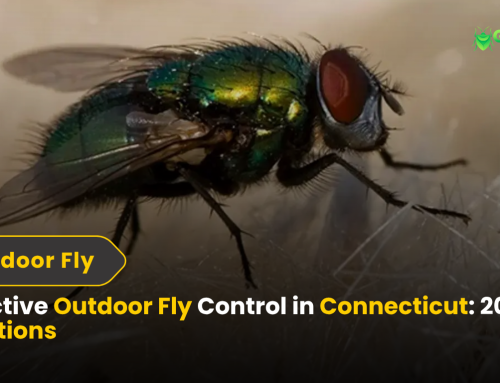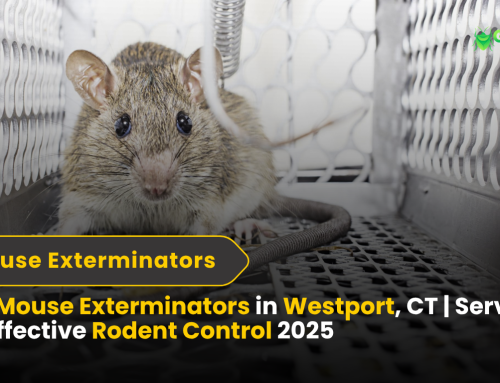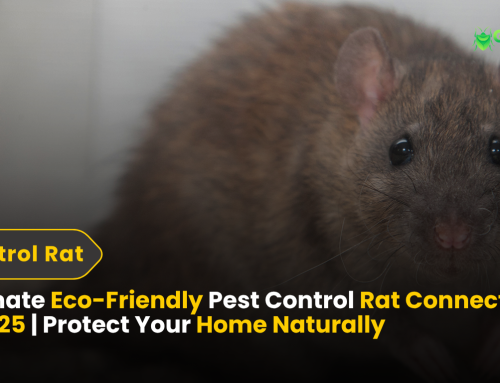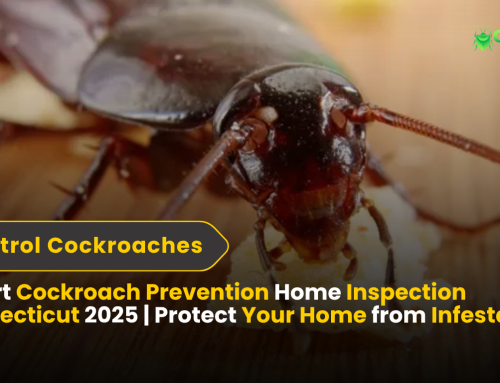How to Get Rid of Fruit Flies Quickly: Solutions and Expert Tips
Fruit flies are one of the most common and persistent household pests, famous for their rapid reproduction and resilience. These tiny insects are attracted to ripe or decaying fruits, sugary substances, and organic matter, which makes kitchens and pantries ideal breeding grounds. Their presence can be both annoying and unhygienic to food and homes As they quickly multiply can easily contaminate food with the harmful bacteria and pathogens.
If you’re tired of facing these tiny invaders from a long, But now there are several ways to eliminate fruit fly quickly and rapidly. This comprehensive guide will provide you with the latest and effective treatment methods, including homemade traps and chemical solutions, to help you tackle the problem. In addition, we will provide a prevention tips to ensure these pests don’t return, such as keeping food sealed, maintaining cleanliness, and managing home waste.
We’ll also explain the most common questions about fruit fly that usually people want to know about, such as how long it takes to get rid of them, why they keep coming back, and whether they can harm your health. If your fruit fly infestation persists, we’ll offer professional advice on when to consult pest control experts who can provide long-term, tailored solutions. With the right method, you can keep your home safe and free from fruit fly and ensure a clean, pest-free environment that evryones loves.
Understanding Fruit Flies What Actually They Are?
What Are Fruit Flies?
Fruit flies (Drosophila melanogaster) are small, winged insects that typically measure about 3-4 mm in length. These pests are yellowish-brown in color with distinctive red eyes. They thrive in warm environments and are often found in kitchens, pantries, and other areas with abundant food sources. Fruit flies are known for their rapid reproduction, laying hundreds of eggs in decaying organic matter. Their short lifespan and quick breeding cycles allow them to infest an area in a very short amount of time.
Why Are Fruit Flies in Your Home?
Fruit flies are naturally drawn to environments that provide easy access to food and moisture. Some common attractants include:
- Overripe or Rotting Fruits and Vegetables: Fruit flies are particularly attracted to decaying produce.
- Sugary Liquids: They are drawn to beverages like fruit juices, sodas, and alcoholic drinks that are left uncovered.
- Organic Waste: Fruit fly often breed in food scraps, food waste in garbage disposals, or trash bins that aren’t properly sealed.
- Moisture: Damp sponges, mops, or drains provide ideal conditions for fruit fly to breed and thrive.
How to Get Rid of Fruit Flies Quickly
1. Immediate Clean-Up
- Remove Attractants: The first step in eliminating fruit flies is to dispose of overripe fruits and vegetables. Clean up any spills or sticky residues on countertops that may attract them.
- Empty Trash Bins: Ensure trash bins are emptied regularly to avoid food scraps building up. Keep the bins clean and make sure they are sealed tightly to prevent fruit fly from accessing food waste.
- Drain Maintenance: Fruit fly often breed in damp, organic matter found in drains. To prevent this, clean kitchen sinks and drains using a mixture of hot water and vinegar. This will help remove any trapped debris and reduce breeding grounds for the flies.
2. Homemade Fruit Fly Traps
Homemade traps are an effective and easy way to eliminate fruit flies in your home. Here are three simple traps you can make using household items:
Apple Cider Vinegar Trap
- Ingredients: Apple cider vinegar, dish soap, plastic wrap.
- How to Make: Fill a small bowl or jar with apple cider vinegar, which attracts fruit fly. Add a few drops of dish soap to break the surface tension, causing the flies to sink. Cover the jar with plastic wrap and poke small holes in the top. The flies will enter through the holes but won’t be able to escape.
Red Wine Trap
- Ingredients: Red wine, plastic wrap.
- How to Make: Pour a small amount of red wine into a glass. Cover it with plastic wrap and poke holes in the top. The sweet scent of the wine draws fruit fly in, but once they enter, they won’t be able to fly out.
Milk, Sugar, and Pepper Trap
- Ingredients: Milk, sugar, ground pepper.
- How to Make: Heat a mixture of milk, sugar, and ground pepper in a saucepan. Pour it into a shallow dish and place it where flies tend to gather. The sweet smell attracts the flies, and they drown in the liquid.
3. Chemical Solutions
If homemade traps are not enough, chemical solutions can provide an additional layer of defense against fruit flies.
- Insect Sprays: Use insect sprays that are specifically labeled for fruit fly. These sprays are designed to target and eliminate flies without harming humans or pets when used correctly. Always follow the manufacturer’s instructions for safe application.
- Sticky Traps: Place sticky traps near areas where fruit fly are most active. These traps attract and capture the flies, helping you monitor the infestation and reduce their numbers.
- Drain Cleaners: Fruit fly often breed in organic debris found in drains. Use a drain cleaner to eliminate any breeding grounds and prevent future infestations. Regular cleaning of pipes will help keep the population under control.
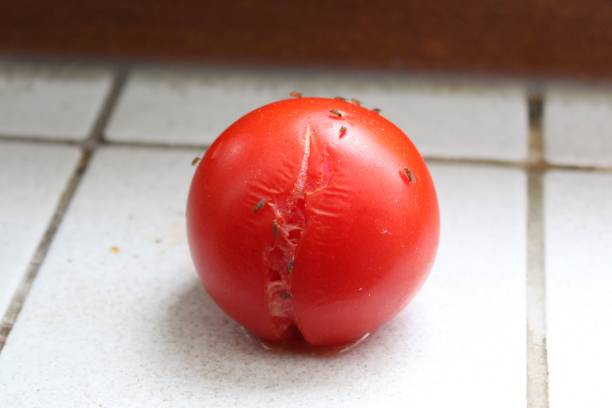
Preventing Future Fruit Flies Infestations
1. Maintain a Clean Environment
To prevent fruit flies from invading your home, keeping your environment clean is essential. Regularly clean countertops and floors to remove any crumbs, spills, or sticky residues that could attract flies. Store food in sealed containers to keep it safe from pests. Also, wash dishes promptly to avoid leaving food scraps behind, which can lure fruit fly into your kitchen.
2. Proper Food Storage
Proper food storage is key to preventing fruit fly. Always refrigerate ripened fruits and vegetables, as these are a primary food source for the pests. Avoid leaving open sugary drinks, alcohol, or fruit juice exposed, as they can quickly attract fruit fly. Sealing all food items in airtight containers will help prevent fruit flies from getting into your pantry and refrigerator.
3. Manage Waste
To avoid fruit fly infestations, manage your waste carefully. Use garbage bins with tight-fitting lids to prevent flies from accessing organic matter. Empty trash bins frequently, especially those containing food waste. Make sure to rinse recyclables like soda cans, bottles, and jars before disposal to eliminate any residue that may attract fruit fly.
4. Monitor Moisture Levels
Fruit flies thrive in damp environments, so it’s important to monitor moisture levels around your home. Fix any leaky faucets or pipes to prevent standing water, which can provide breeding grounds for these pests. Thoroughly dry wet sponges, mops, and dishcloths after use, and use a dehumidifier in damp areas like basements to reduce moisture levels that may attract fruit fly.
Professional Advice for Persistent Infestations
If your fruit fly problem persists despite your best efforts, it’s time to consult a pest control professional. They can:
- Conduct a thorough inspection to locate breeding sites.
- Provide specialized treatments, such as insect growth regulators or fogging solutions.
- Offer long-term prevention strategies tailored to your home’s specific needs.
Why Choose a Professional?
- Expertise in identifying and addressing the root cause of infestations.
- Access to advanced tools and treatments not available to the general public.
- Safe and effective solutions that minimize risks to your family and pets.
A Long-Term Solution for a Fruit Fly-Free Home
1: Implement Immediate Measures
The first step in eliminating a fruit fly infestation is to address the immediate problem. Remove any attractants such as overripe fruits, vegetables, or sugary substances from countertops and open areas. Use homemade traps, such as apple cider vinegar or red wine traps, to reduce the current fruit fly population. This will help significantly lower the number of flies in your home and prevent further breeding.
2: Focus on Prevention
Once the infestation is under control, focus on prevention to ensure fruit fly don’t return. Maintain a clean and dry environment by regularly cleaning countertops, floors, and drains. Store food in sealed containers, and dispose of trash promptly, especially organic waste. Monitor moisture levels by fixing any leaks and drying damp areas, as moisture is a key attractant for fruit fly.
3: Consult Professionals if Needed
If the fruit fly problem persists despite your efforts, it may be time to consult a pest control professional. Experts can assess your home, identify hidden breeding grounds, and provide targeted solutions to completely eradicate the infestation. They can also offer long-term strategies and prevention plans to ensure your home remains fruit fly-free.
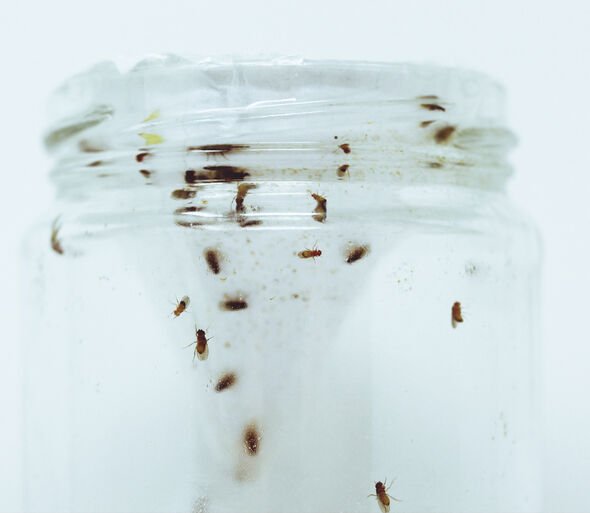
FAQs About Fruit Flies
1. How long does it take to get rid of fruit flies?
With proper methods, fruit flies can be eliminated within 3-5 days. Severe infestations may take longer, requiring professional intervention.
2. Can fruit flies harm my health?
While fruit flies are not directly harmful, they can carry bacteria from decaying matter, contaminating food and surfaces.
3. Why do fruit flies keep coming back?
Recurring infestations are often due to overlooked breeding sites or improperly stored food. Regular cleaning and preventative measures are essential.
4. Are fruit fly traps safe for pets?
Homemade traps with apple cider vinegar or wine are generally safe. However, keep chemical traps out of reach of pets.
5. Can fruit flies breed in drains?
Yes, fruit flies can lay eggs in the organic debris lining drains. Regular cleaning can prevent this.
Conclusion
Fruit flies may be a small nuisance, but they can quickly become a persistent problem if not addressed. However, with the right strategies, you can eliminate them and prevent future infestations. Start by tackling the immediate issue with traps, such as apple cider vinegar or red wine traps, and perform a thorough cleaning to remove attractants like overripe fruits and sugary substances. This will significantly reduce the fly population in your home.
Once the infestation is under control, focus on long-term prevention. Maintaining a clean, dry environment is key—store food in sealed containers, dispose of trash regularly, and keep your kitchen and pantry tidy. Monitor moisture levels by fixing leaks and drying damp areas, as these are prime breeding grounds for fruit flie.
For persistent or severe infestations, professional pest control services can provide additional peace of mind. Experts can offer targeted solutions and identify hidden breeding sites you may have missed. Their tailored treatments ensure that even the most stubborn infestations are resolved effectively. With a combination of proactive measures and expert help, your home can remain fruit fly-free, providing you with a clean, comfortable, and pest-free living environment.



